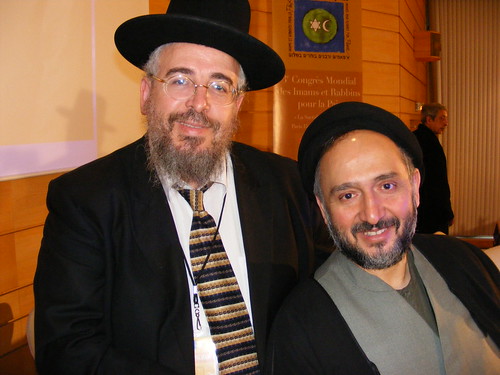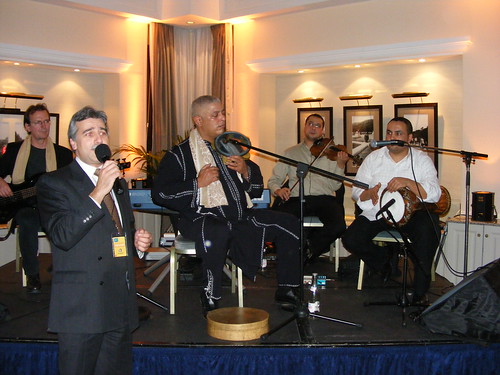Febuary 1-7 is World Interfaith Harmony Week, advancing inter-religious dialogue as a way to promote harmony between all people. It features conferences, workshops, seminars, lectures, and hundreds of events on every continent. Various U.N. agencies are cooperating to discuss effective strategies to foster mutual understanding between faiths and cultures.
On September 23, 2010, King Abdullah II of Jordan introduced the concept of World Interfaith Harmony Week at the Plenary Session of the 65th U.N. General Assembly in New York. In his speech he said, “It is essential to resist forces of division that spread misunderstanding and mistrust, especially among peoples of different religions.” In October of 2010, the United Nations General Assembly adopted a resolution to mark World Interfaith Harmony Week annually during the first week of February. King Abdullah has long been known for his peace initiatives. Under his patronage, the Common Word initiative has brought together the highest ranking Christian and Muslim leaders from around the world on the basis of the two greatest commandments of Loving God, and Loving the Neighbor.
The objectives behind the World Interfaith Harmony Week, in the words of the author of the resolution, Prince Ghazi bin Muhammad of Jordan, are:
1. To co-ordinate and unite the efforts of all the interfaith groups doing positive work with one focused theme at one specific time annually, thereby increasing their impact.
2. To Harness and utilise the collective might of the world’s second-largest infrastructure (that of places of worship — the largest being that of education) specifically for peace and harmony in the world: inserting, as it were, the right “software” into the world’s religious “hardware”.
3. To permanently and regularly encourage the silent majority of preachers to declare themselves for peace and harmony.
Qamar-ul Huda, of the Religion and Peacemaking Center of Innovation, spoke on a panel called “The Role of faith-based organizations and interfaith initiatives in Development, Reconciliation and Peacebuilding” sponsored by the Organization of Islamic Conference (OIC) and as a part of World Interfaith Harmony Week. Huda spoke about the ways in which Muslim religious leaders are working in the areas of conflict prevention, mediation, and conflict transformation. Huda said religious leaders and religious organizations involved in peacemaking are operating from their respective faith traditions to support personal, communal, and relational transformations. Some of these peacemaking efforts include using innovative platforms to explain misunderstandings, and using the arts to express mutual respect.
From Jerusalem to Malappuram in India, from Amman in Jordan to Pietermaritzburg in South Africa, from Sedona in the United States to Newcastle in Australia, and a myriad of other places, special events were held to shine the spotlight on the need for interfaith understanding. In Guyana, one observance for World Interfaith Harmony Week was a “Harmony Walk”, followed by a religious programme and cultural show. The event included leaders from the Muslim, Christian, Hindu, Baha’i and Rastafarian faiths. Those gathered were treated to songs and dance, as well as readings from the different groups.
Hindu statesman Rajan Zed, who is President of Universal Society of Hinduism, explained that “Dialogue would bring us mutual enrichment and help us overcome prejudices passed on to us by previous generations.”





